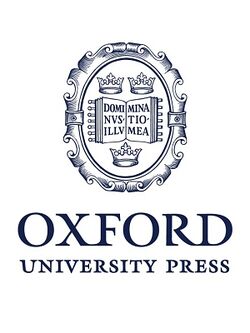Category:Oxford University Press: Difference between revisions
(Created automatically by the AutoCreateCategoryPages extension.) |
No edit summary |
||
| (5 intermediate revisions by the same user not shown) | |||
| Line 1: | Line 1: | ||
{{OrganizationCategoryPage | |||
|image=File:Oxford University Press.jpg | |||
|link=https://global.oup.com/?cc=us | |||
|wpDescription=Oxford University Press is the largest university press in the world, publishing for three primary markets: research, education, and English language teaching. OUP’s mission is to create world-class academic and educational resources and make them available as widely as possible. | |||
'''History'''<br> | |||
Oxford University Press has a rich history which can be traced back to the earliest days of printing. The first book was printed in Oxford in 1478, just two years after Caxton set up the first printing press in England. The University was involved with several printers in Oxford over the next century. | |||
From the late 1800s OUP began to expand significantly, opening the first overseas office in New York in 1896. Other international branches followed, including Canada (1904), Australia (1908), India (1912), and Southern Africa (1914). | |||
Today, the Press is a global organization with more than 6,000 employees in 53 countries. | |||
|wpPage=https://www.ox.ac.uk/about/organisation/oxford-university-press | |||
}} | |||
Latest revision as of 15:01, 1 October 2020
Oxford University Press
History
Oxford University Press has a rich history which can be traced back to the earliest days of printing. The first book was printed in Oxford in 1478, just two years after Caxton set up the first printing press in England. The University was involved with several printers in Oxford over the next century.
From the late 1800s OUP began to expand significantly, opening the first overseas office in New York in 1896. Other international branches followed, including Canada (1904), Australia (1908), India (1912), and Southern Africa (1914).
Today, the Press is a global organization with more than 6,000 employees in 53 countries.In a careful analysis of the historical and rhetorical basis of the literature, Steven Heine demonstrates that the Mu version of the case, preferred by advocates of the key-phrase approach, does not by any means constitute the final word concerning the meaning and significance of the Mu Koan. He shows that another canonical version, which gives both "Yes" and "No" responses, must be taken into account. Like Cats and Dogs offers critical insight and a new theoretical perspective on "the koan of koans." (Source: Oxford University Press)
The different philosophies of the Buddhist tradition are chiefly concerned with the understanding of mind, consciousness, and mental states. In Buddhist literature, the relative nature of mental phenomena are described in a rather detailed manner, but more interestingly certain sections contain significant hints pointing to the so-called true nature of the mind and, in particular, how to access it. One of the terms referring to this true nature of mind is Buddha-nature, describing a quality of potential awakening inherent to the mind of everyone.
In Mipam on Buddha-Nature, Douglas S. Duckworth seeks to illustrate the Tibetan contexts in which this so-called Buddha-nature is variously described, conceptualized, and experienced. In doing so, he draws on approximately twenty-eight different Tibetan texts written by Mi pham ( 'jam mgon mi pham rgya mtsho, 1846–1912) that he quotes; translating and paraphrasing the quotes in order to discuss their purport in relation to a significant number of interpretations of the issue by earlier Tibetan Buddhist authors, all of which are based on the explanations found in the earlier Indian Buddhist literature. However, the main text selected and translated in full is Mi pham’s Bde gshegs snying po’i stong thun chen mo seng ge’i nga ro. Duckworth also cites later masters commenting on Mi pham’s writings, notably Bötrul (Bod sprul mdo sngags bstan pa’i nyi ma, 1898–1959).
Snellgrove presents the Hevajra tantra, and tantric texts of this class, not as degenerate products of a faith at the time in terminal decline in India—as has often beeb claimed by puritanical scholars—but rather as a wholly legitimate expression of esoteric ritual and meditative practice developed as a natural evolution within the madhyamaka tradition.
While based primarily on Nepalese manuscript editions of the text, Snellgrove makes extensive reference to the Tibetan translation as well as to extant Indian commentaries. The first half of the work comprises an introduction and the actual translation with detailed annotations, while the second consists of the Romanized original Sanskrit and Tibetan texts and an extensive glossary. (Source: Back Cover)
Pages in category "Oxford University Press"
The following 3 pages are in this category, out of 3 total.

